Peafowls, more commonly known as peacocks, come in an incredible variety of colors. Contrary to the beautiful shades of blue and green that we are used to seeing in books and documentaries, these flamboyant, feathered bipeds come in several brilliant hues.
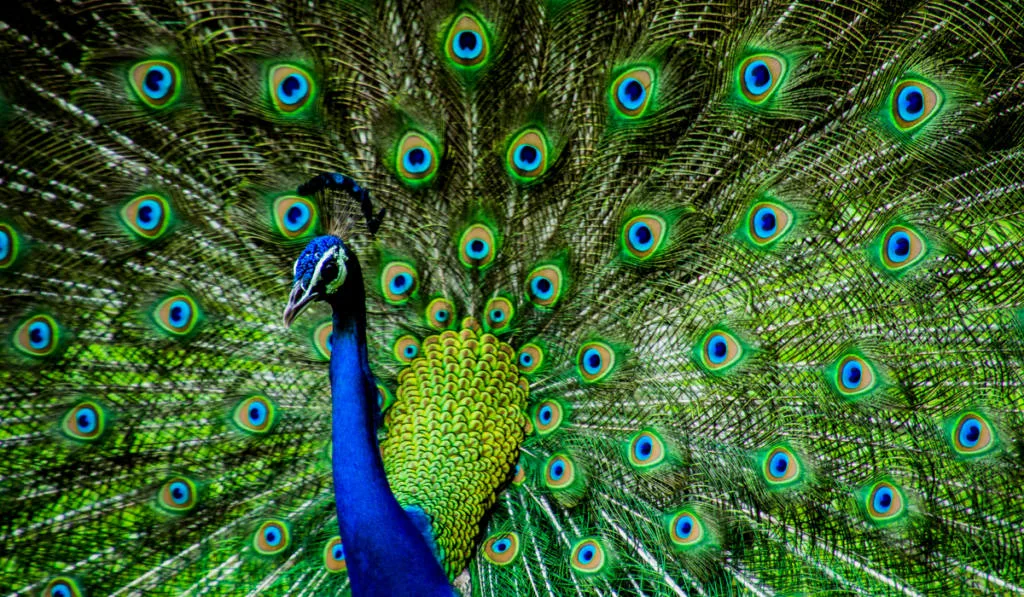
For someone on the outside looking in, it can seem bewildering as to why these commonly preyed upon birds would have such noticeable coloring. These brilliant animals can come in jade, blue, green, cameo, opal, white, charcoal, purple, peach, bronze, taupe, midnight, indigo, and lastly, hazel.
In this article, we will cover all of their colors, patterns, and more!
Table of Contents
Peacock Colors
Due to the variety of colors found on a peafowl, the color they are considered is usually whatever hue adorns their necks.
The two peafowl families you will see are going to be the India Blue and the India Green. Using our color criterion, this means that India Blues have a blue neck, and the India Greens obviously have a green neck.
Despite this, mutations have brought forth a number of alternative colors that can be found on peafowls to this day. So while the typical peafowl is going to be blue or green, it doesn’t mean that every peacock will fall into this limited color pattern.
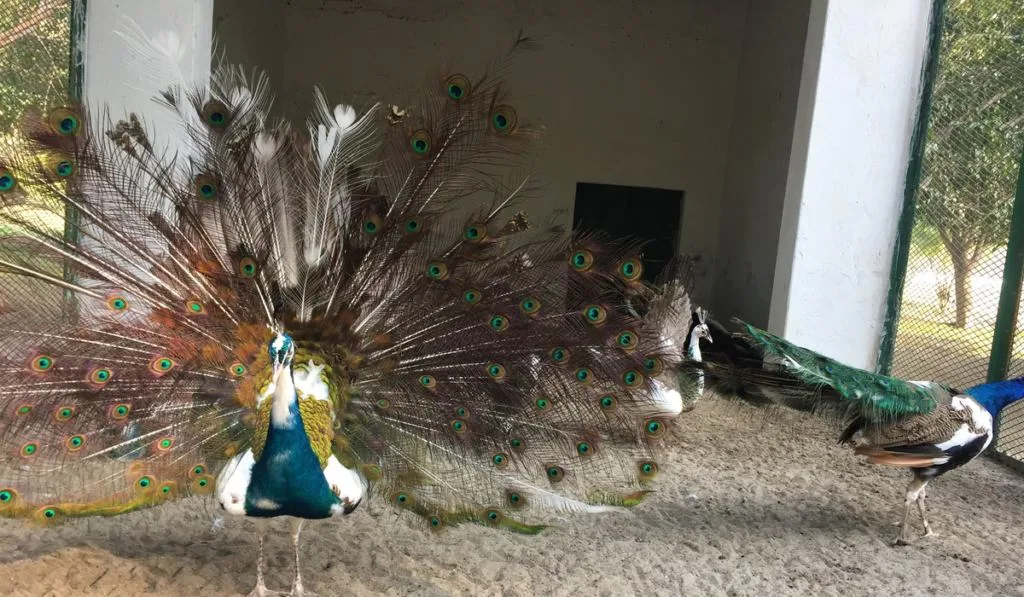
At the time of writing this article, there were 13 color mutations that have been recorded for peafowls. These mutations are purple, charcoal, white, Buford bronze, midnight, opal, cameo, jade, peach, hazel, indigo, taupe, and finally, Sonja’s Violeta.
That might seem like a fairly limited list of colors until you take into account that the chance of a genetic mutation visibly showing is about one in a million. These mutations are usually the product of ambitious breeders being very picky about who they allow their peafowls to breed with.
5 Peacock Color Patterns
The way a peafowl’s coloring falls across its varied feathers is what constitutes the pheasant body pattern.
These patterns have been recorded across many different birds to the point that they can be identified by name. A pattern offers no indication of what the coloring of a peafowl might be, so they are rightfully separated into different identifying groups.
While there are five known patterns that we have recorded, all of them stem from the original barred wing pattern that existed in both categories of birds (India green and India blue).
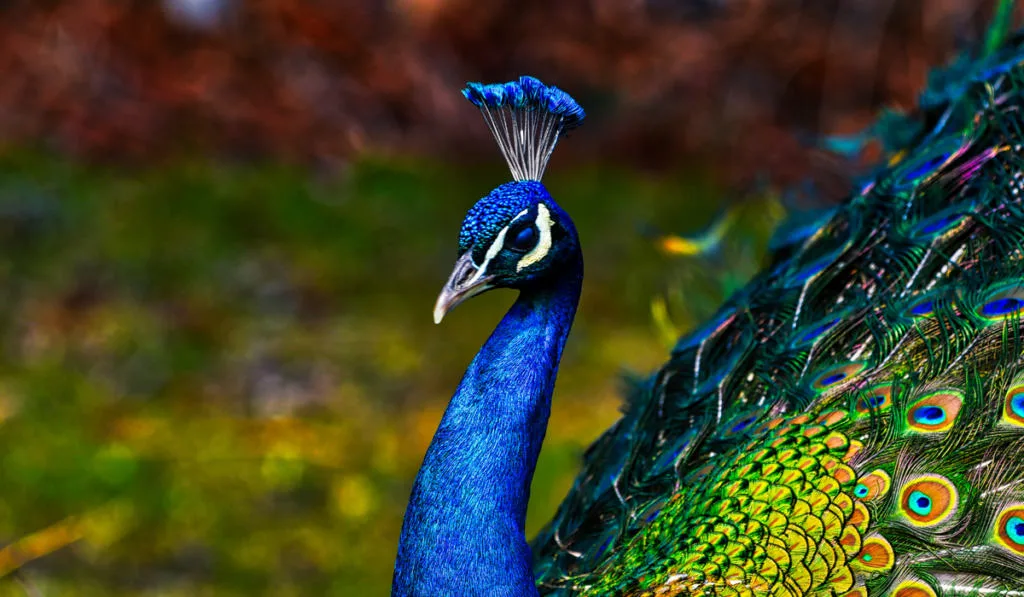
Barred Pattern
This pattern can be identified by white and black lines that run from top to bottom on the wings of a peafowl. You can see this pattern much more distinctly on India blues, where it spreads further out on the wings.
White-Eyed Pattern
The first mutation is known as the white-eyed pattern, which looks exactly as the name suggests. This pattern mutation affects the distinct “eyes” found on the feathers and turns them white. This mutation can also spread to the rest of its train, turning certain feathers white as well.
This mutation is going to be more noticeable on peacocks than peahens, as they have longer trains that can make identifying the mutation far simpler.
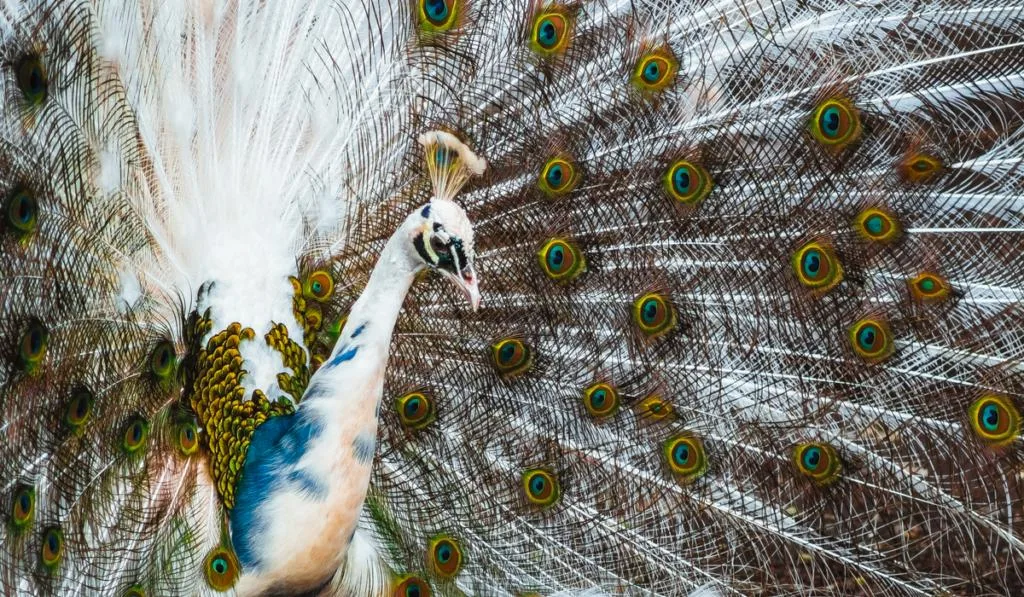
Pied Pattern
Another mutation is the pied pattern which adversely affects the coloring of the peafowl’s coat and causes clumps of white feathering to haphazardly appear across the body. This pattern can affect both genders of peafowl and typically results in about two-fifths of the body being white.
Silver Pied Pattern
A most drastic mutation in the same vein is the silver pied pattern that affects the feathers far more drastically than the previous mutation. The biggest difference is that this mutation makes it seem like the clumps of color are the odd distinction, while the rest of the body remains a somewhat uniform white. This mutation, on average, leaves about a tenth of the feathering with color, with the rest being white.
Black Shoulder Pattern
The final mutation is known as the black shoulder pattern. This pattern is associated with India blue peacocks and makes their wings one uniform color, typically.
In the case of peahens, what you will notice is that their color changes to that of intermingling brown and white with colored tufts across their figure.
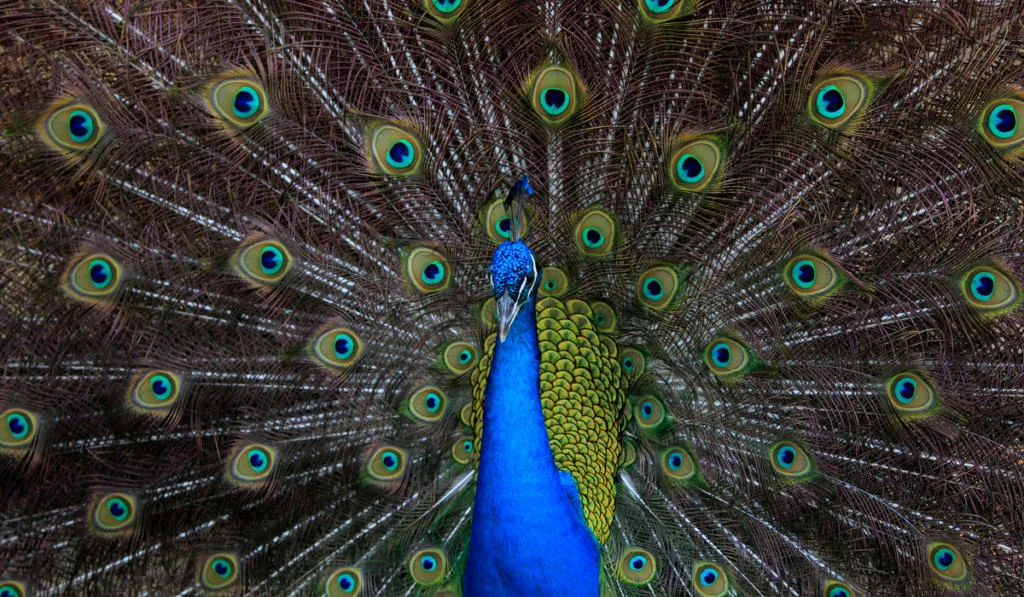
Peacock Colors and Defense Tactics
Peafowls are pheasants with flamboyant mating displays and hollow chest-puffing exercises to intimidate competing males, though they do have methods to escape predators that are actually practical.
Their feathers — usually clumped together and not puffed out — give the pheasant a very long, cumbersome end that looks like it is an easy target for stealthy predators.
This is actually true, though it also works as a defense for the peafowl, who can shake off the gripped feathers and fly far enough to escape their would-be captor.
Peafowls can’t fly south for the winter like most birds, though they can maintain flight for a decent enough period to escape potential predators, some even flying as far as a mile. So while their colors might give them away, they do have methods of working around this genetic quirk.
Conclusion
Peafowls are one of the most colorful birds we have ever discovered, to the point that the wealthy used to keep them around their yards for their beautiful feathers. Mutations are still being discovered fairly recently, with the jade peafowl being discovered as recently as the year 2000. Who knows what the following years will bring in terms of color and patterns found across these colorful birds!
